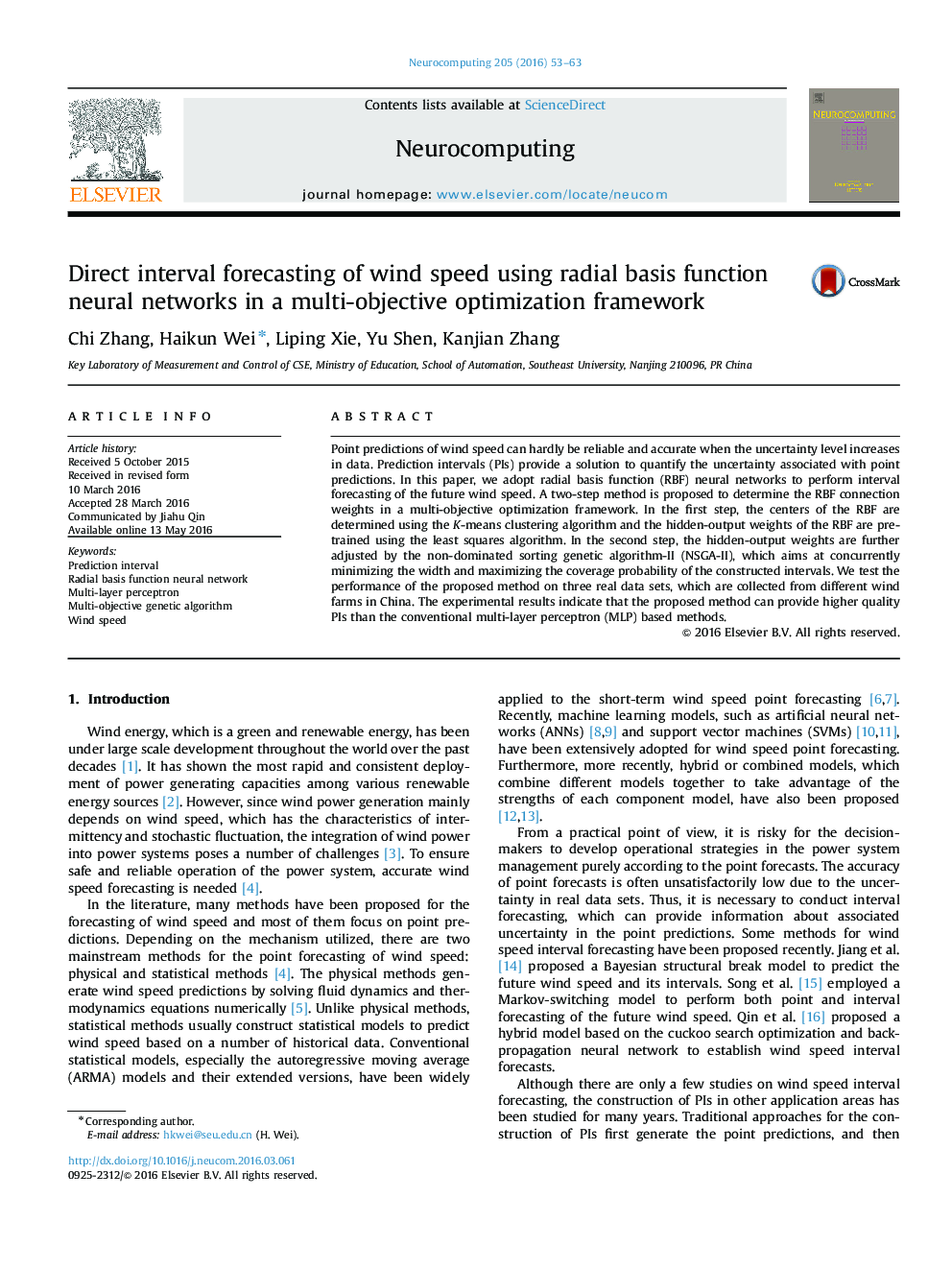| Article ID | Journal | Published Year | Pages | File Type |
|---|---|---|---|---|
| 405680 | Neurocomputing | 2016 | 11 Pages |
Point predictions of wind speed can hardly be reliable and accurate when the uncertainty level increases in data. Prediction intervals (PIs) provide a solution to quantify the uncertainty associated with point predictions. In this paper, we adopt radial basis function (RBF) neural networks to perform interval forecasting of the future wind speed. A two-step method is proposed to determine the RBF connection weights in a multi-objective optimization framework. In the first step, the centers of the RBF are determined using the K-means clustering algorithm and the hidden-output weights of the RBF are pre-trained using the least squares algorithm. In the second step, the hidden-output weights are further adjusted by the non-dominated sorting genetic algorithm-II (NSGA-II), which aims at concurrently minimizing the width and maximizing the coverage probability of the constructed intervals. We test the performance of the proposed method on three real data sets, which are collected from different wind farms in China. The experimental results indicate that the proposed method can provide higher quality PIs than the conventional multi-layer perceptron (MLP) based methods.
